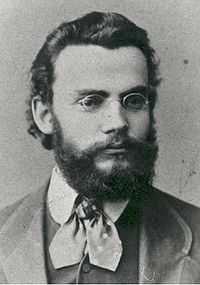Carl Robert Jakobson

Carl Robert Jakobson (26 July [O.S. 14 July] 1841 in Tartu – 19 March [O.S. 7 March] 1882 in Kurgja) was an Estonian writer, politician and teacher active in Livonia, Russian Empire. He was one of the most important persons of Estonian national awakening in the second half of the 19th century.
Between 1860 and 1880, the Governorate of Livonia was led by a moderate nobility-dominated government. Jakobson became the leader of the radical wing, advocating widespread reforms in Livonia. He was responsible for the economic-political program of the Estonian national movement. Jakobson urged Estonians to demand equal political rights with the region's Germans and an end to privileged position of the Baltic-German nobility.
In 1878, Jakobson established the Estonian newspaper Sakala. The paper quickly became a vital promoter of the cultural awakening. He also had a central role in the establishment of the Society of Estonian Literati, which was an ifluential Estonian association in the second half of the 19th century.
Carl Robert Jakobson was depicted on the 500 kroon banknote.

In 1948 the Farm Museum of C.R. Jakobson was established by Jakobson's oldest daughter, Linda. This museum was designed to illustrate elements of rural life in Estonia during Jakobson's lifetime. [1]
Wood engraver and Baptist missionary Eduard Magnus Jakobson was his younger brother.
References
- ↑ "Carl Robert Jakobson Talumuuseum". Retrieved 2013-03-28.
External links
|